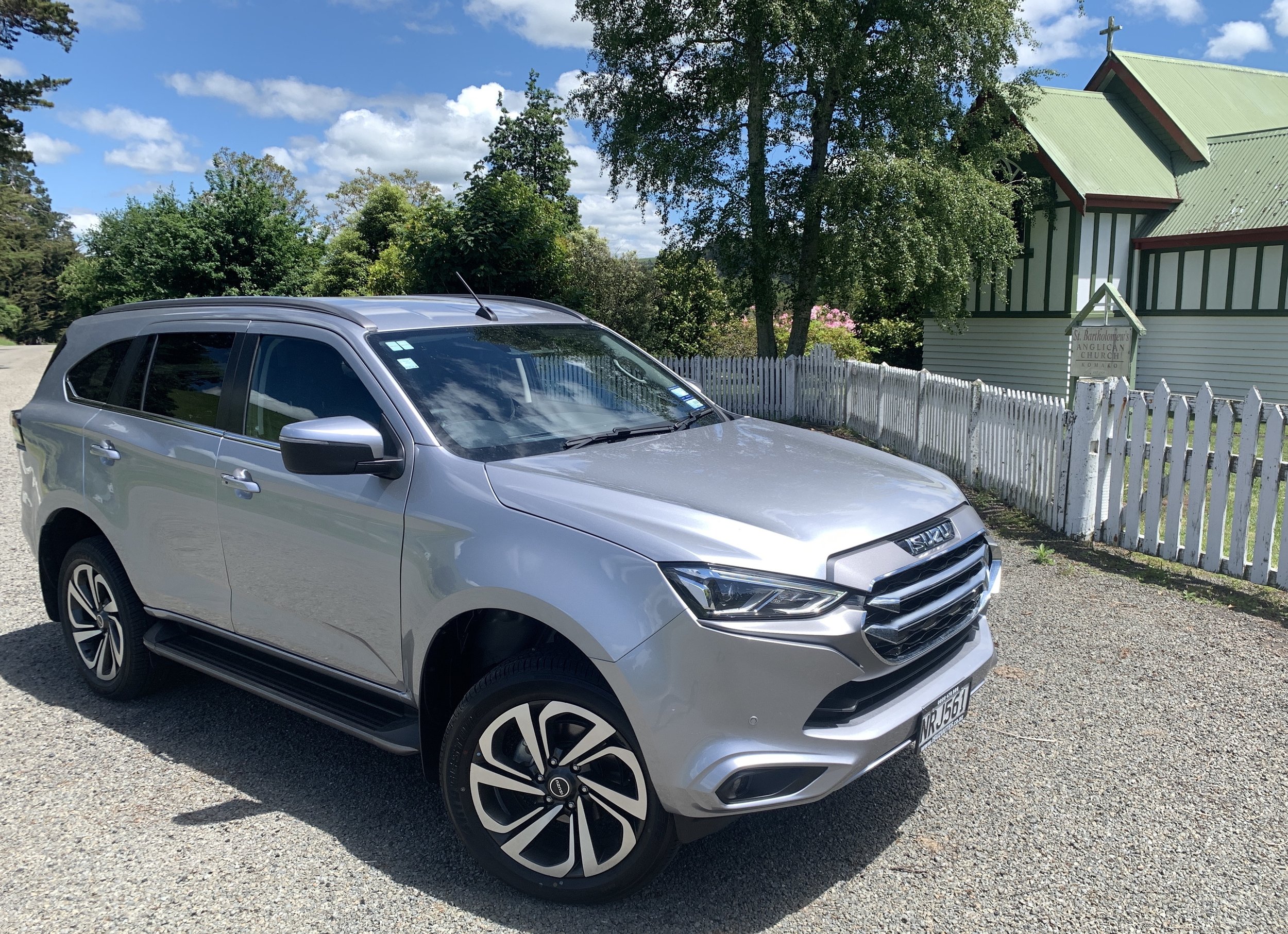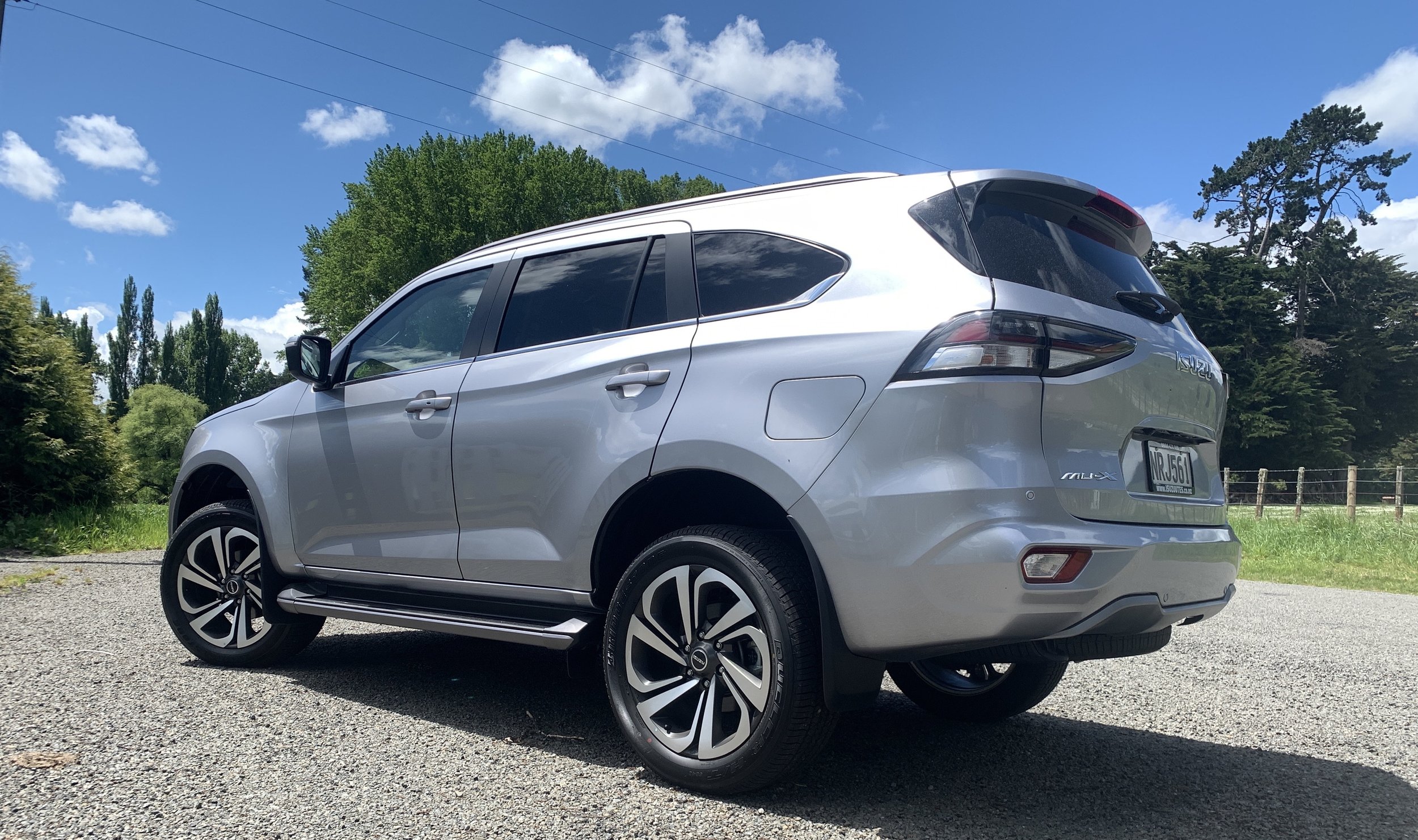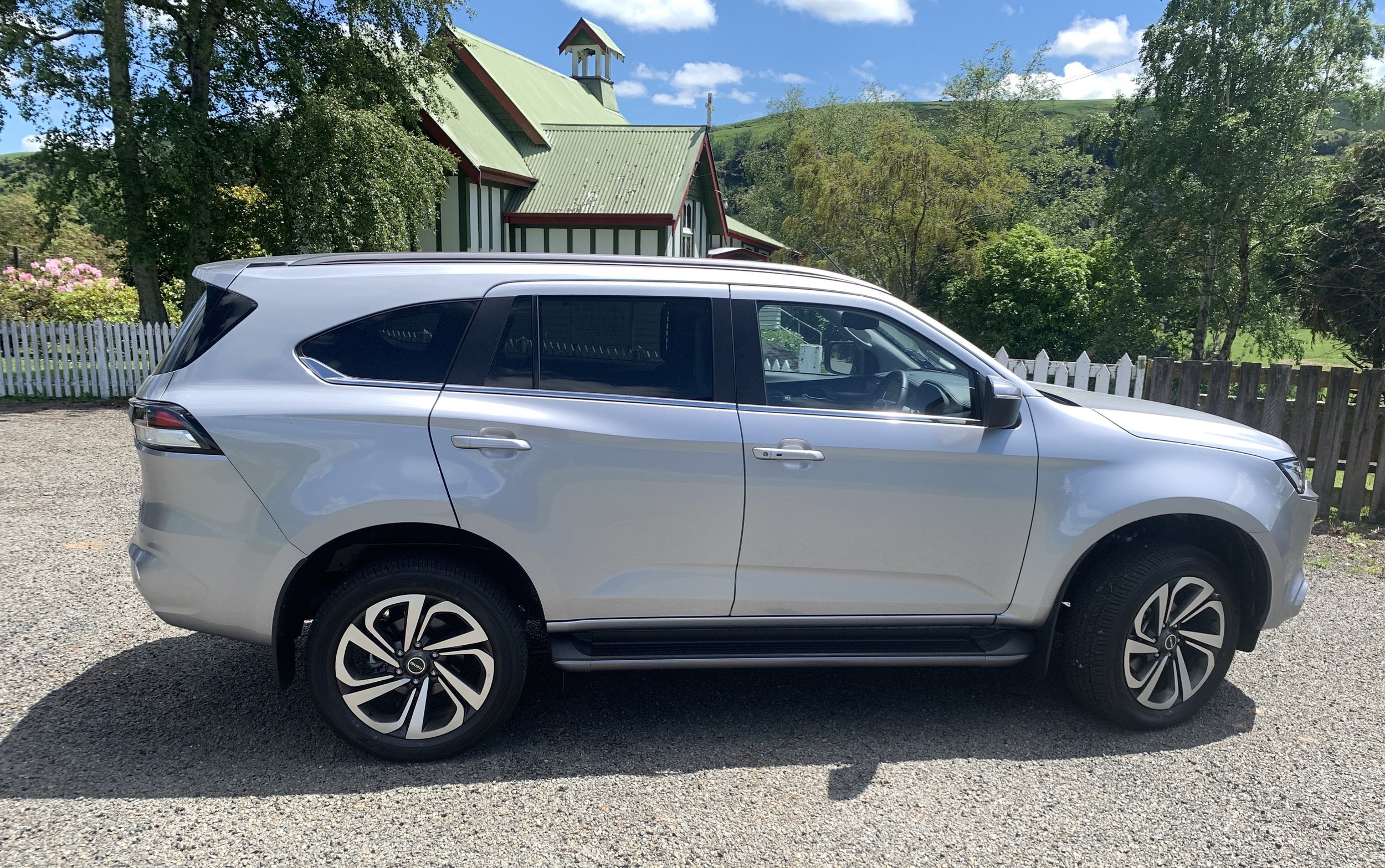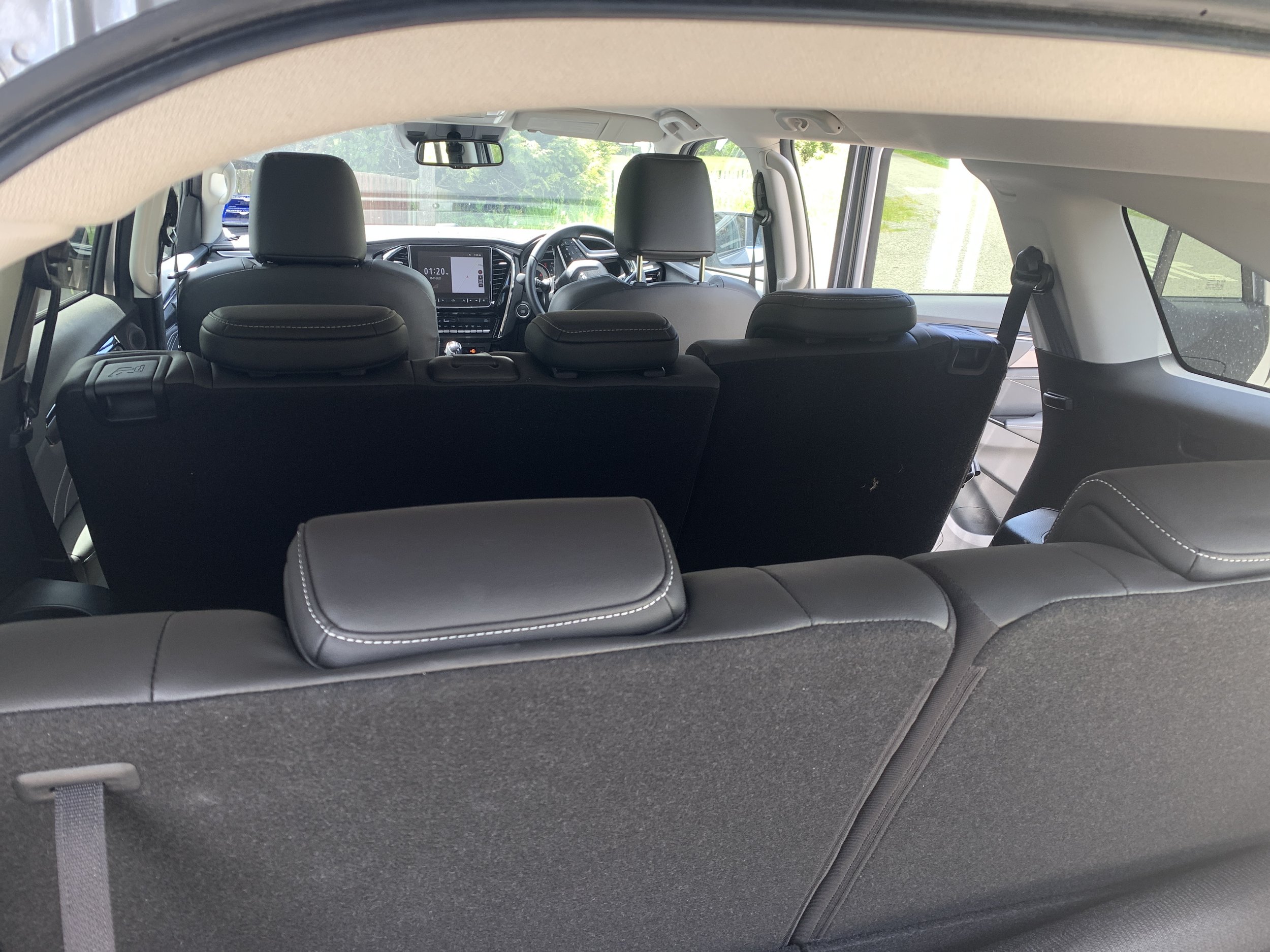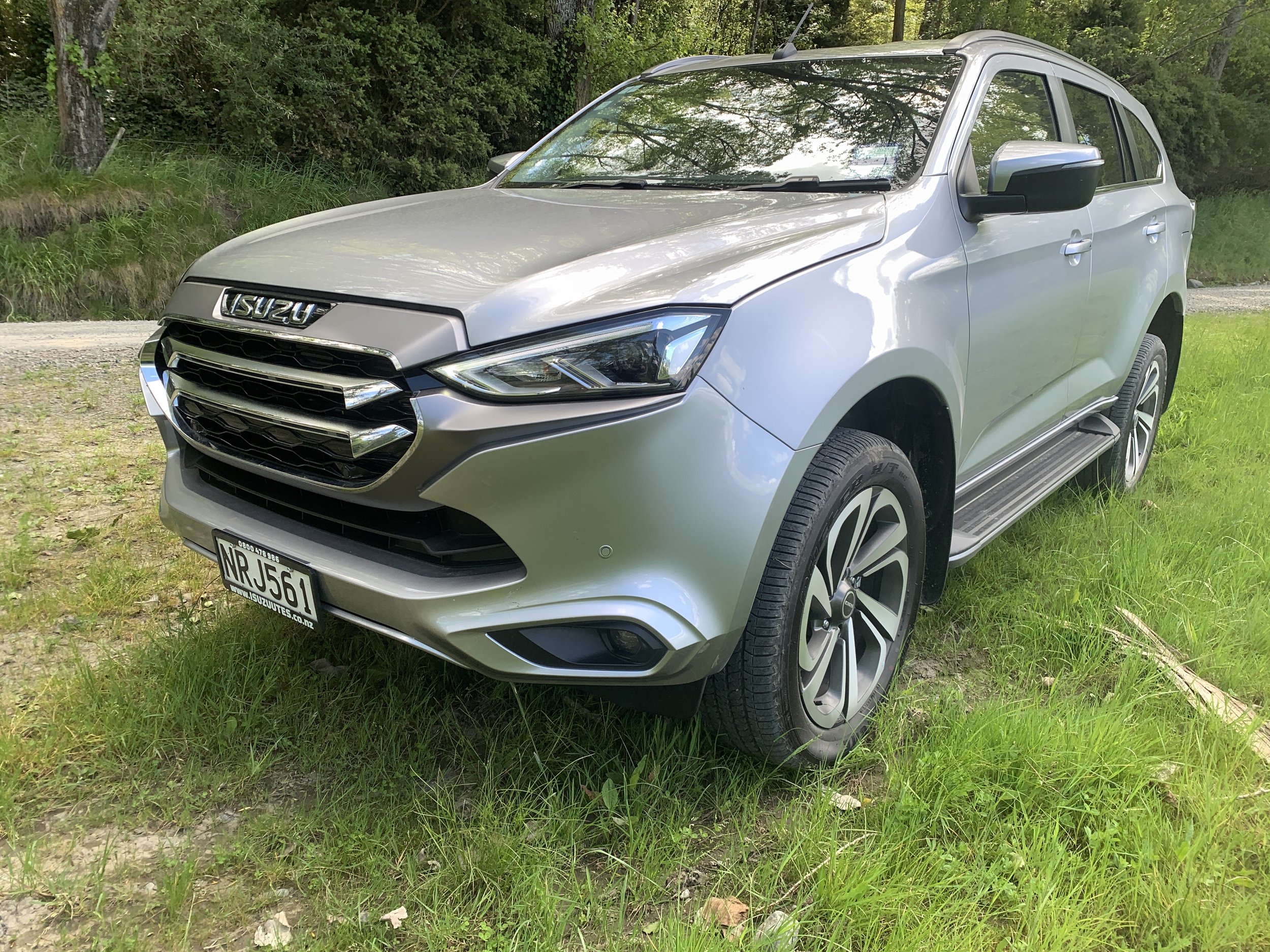Isuzu MU-X LS-T review: Beast with burden
/The new generation is perfect for the rough, and better now for the schmooze. A shame the infotainment is a nightmare and the vehicle has become quite pricey.
Price: $80,990
Powertrain and economy: 3.0-litre turbo-diesel inline four, 140kW/450Nm, 6-speed automatic, 4WD, combined economy 8.3L/100km, CO2 216g/km.
Vital statistics: 4850mm long, 1870mm wide, 1825mm high, 2855mm wheelbase, luggage capacity 311/1119 litres, 20-inch alloy wheels.
We like: Trustworthy companion in extreme conditions, improved driving feel, capacious interior.
We don't like: Infotainment system demands complete redesign, expensive.
ONE or two silver-spooned sports utility wagons seem set to start heading into fancy electric driving formats, but back in the ‘real’ world where honest utilitarianism holds sway… yeah, nah.
Perfect example: The latest Isuzu MU-X. Arriving a year after its D-Max utility sister ship, the model chosen for New Zealand is the highest specification version built by the brand, so furnishes with plushest trimmings – including leather, of course - and a swathe of technology and a part-time all-wheel-drive system. It’s been totally restyled and delivers really impressive safety systems, improved comfort and driver assists. Yup, a lot has changed.
And, yet, of course, continuing being based off a diesel toiler utility, with the obvious design and construction links that come with that approach, means it’s at best a new era of old school; an example of advancement with one foot in the past.
All this, and having the luck to show up at a time when diesel’s status as the ‘sensible’ big rig fuel seems to be under attack too. It’d be so much easier if Isuzu had an electrification plan but … nah. Nothing’s been mentioned.
Ah well, one aspect about the MU-X that’s just as obvious in this edition as the last is its strength of indomitable spirit; it’s an extra-hardy vehicle born to take on tough challenges.
Diesel-powered seven-seater family four-wheel drives that can adeptly take on big kilo towing – now up to a class-leading 3500kg – are something of a rare breed. Those that can do that, and are also robust enough to confidently tackle a driving environment in which gravel could be the least taxing surface on something so straightforward as a school or shopping run, all the more so. The original MU-X was in that clan. The new one, though more polished, still seeks to maintain membership.
Whether that lends enough credibility to keep it from getting bogged in the swamp of social stigma remain to be seen; diesels of this size and calibre have become targets and the ute tax alone is set to deliver the one kind of tough terrain they are not particularly well prepared for.
Yet perhaps the new MU-X can at least show it’s kinda in touch with modern tastes, through at least now being much less back-to-basics than its forebear; in look, driving feel and how it kits out.
There’s no argument that the adoption of every element of the immense suite of sophisticated driver support and occupant safety technologies developed for the D-Max (and, of course, shared into the Mazda BT-50) could stand to be an ace card implementation for a model that still seems just a touch old-fashioned in its overall ethos.
While the platform and drivetrain is shared, styling-wise, the association with the D-Max is less obviously linked than previously; quite potentially few panels would be shared. The passenger variant also takes slimmer headlamps. The wagon styling has a lower roof height, too.
Effort to diminish the commercial vehicle origins shows within the cabin, with more shiny black finishing and some softy touch plastics in places where it most matters. The distributor having taken as many comfort items Isuzu has to offer, including dual-zone climate control, rain-sensing wipers, and a leather-like seat trim, helps raise the ambience, too. Sure, ultimately realities of likely usage requires it to put easy-care practicality ahead of absolute plush, so there’s nothing too luxury going on here, but it’s a welcoming zone.
Except in one respect. It’s a real pity the smartest in-cabin features, the electronic displays, are just not up to scratch. A system that proved a frustration during tests of the D-Max and BT-50 made no more sense in the MU-X. The 9.0-inch touchscreen wins points for its size, but little else. It is hugely blighted by vague and hard-to-see little icons and suffers laggy response times and occasional propensity to simple freeze up. There’s also little sense to how it unfolds its operability. The one saving grace is that it supports – though seemingly begrudgingly - Apple CarPlay (and Android Auto), which you’ll revert to at every opportunity because the native systems are so poor, particularly the sav nav. It’s operability simply defies all logic and patience.
Better is the colour info display between the analogue instrument dials, which at least now delivers a digital speed readout but it’s also not great. Overall, it seems Isuzu’s handle on electronics isn’t as strong as it is on basic engineering; there are just so many oddities –three different clocks that, because there’s no synching, might be relating three different times. A wireless Apple CarPlay … that requires a USB cable to charge.
The seating arrangement is far better sorted. Sure, the driver’s position would probably benefit from a touch more telescopic range and, if you’re tall, the seat doesn’t go quite low enough, yet it’s a comfy, commanding position. Good news is though that is not automatically be considered the best seat in the house. The front passenger chair and bench immediately behind are also comfy and roomy. That mid-row is set higher than the fronts, so affords good forward vision and is plenty wide for three across.
Putting the smaller segment of the 60:40 split mid-seat facing the road rather than the kerb seems a weirdness; being other way around would make for safer third row egress and ingress. The backmost row is decent not just for large children but will also suit medium adults. As in the mid-row, cup- and phone-holders and ceiling vents are provided; it does, sadly, miss out on (but USB and 12V sockets). The back seats also now individually recline.
A now-powered tailgate opens to a much smarter boot, for capacity and convenience; one nice touch is that the carpeted floor is now slightly below the level of the load lip, so stuff won’t roll out as easily.
Capacity with all seats in use is 311 litres; with the third row stowed (now flush into the floor) there is 1119 litres. A little flap behind the third-row seats provides a small underfloor storage area as well, and there is a 12V power outlet for your air compressor or camping gadgets.
To improve ride and dynamic feel, Isuzu also replaces the ute’s leaf spring rear axle with a far more sophisticated coil-sprung affair.
As familiar as this formula is, the improvements in how the MU-X now deports suggests Isuzu has done a better job with this second-generation than was accomplished with the first. It’s still not outright street suave, of course, but has certainly tidied up in respect to driving quality and comfort.
As much as that multi-link rear suspension might ultimately hurt it in really tough wilderness work, it pays off everywhere else. For sure, it’s still not set to dance as nimbly as the really modern stuff – body-on-frame simply doesn’t allow this - yet with coils occupants, particularly those out back, are spared the jolty ride that is a leaf spring trademark. You notice straight away how much more settled it is than the ute over pock-marked surfaces and it is much less tail happy on gravel.
The quality of the job Isuzu has wrought here is reflected in the wheel size they’ve chosen; on some vehicles of this ilk, 20-inch rims would be a compromise choice, but here there’s no suffering for a selection that, it has to be said, lends to model’s handsomeness.
The choice of a tyre (Bridgestone Duelers) reflects expectation about the range of driving conditions it is expected to cope with. The level of grip and traction is decent, but unfortunately so is surface-generated roar, particularly on coarse chip. Mind you, even if the rubber was more hushed, this rig would not become a paragon of silence. Isuzu’s claims of improved sound insulation and reduced vibration are not without foundation, yet while the engine has less clatter now, you’re never in any doubt there’s a diesel forward of the firewall. Wind rustle around the mirrors is also an intrusion.
The engine’s bombast speaks to its brawn; regardless the peak outputs are 10kW and 20Nm more than before, this isn’t an engine that sizzles. Yet though it never feels hugely power-packed, it does have quite sufficient torque to deliver a solid heft, strong enough to allow it to at least pull off the line with confidence.
That level of low to mid-range muscularity is really what’s important given the jobs it is envisaged to undertake. That and the reasonable fuel consumption are why diesels remain so popular and relevant.
Isuzu sticking with a six-speed auto when rivals have gone to eight- and 10-speed units might seem a pointer to limited development budgets, yet it seems to do the job adequately well, save that it can jolt when dropping a ratio or two down hills for additional engine braking.
MU-X also receiving the recalibrated off-road system from the ute bodes well, as this includes a new Rough Terrain mode that changes the traction control to tackle the more slippery areas, plus a locking rear differential. That level of kit will remind customers that it’s no less a straight-forward, highly durable model.
The four-wheel-drive mode actions are nicely done. The smoothness in which it will engage in and out of four high from rear-drive at reasonable clip is impressive; the lack of hesitancy will be appreciated by those driving gravel roads that are interspersed with short stretches of seal.
Dropping into low range is also less finicky than before. Select neutral, push and twist the knob and seconds later it is engaged. As on the ute, the diff lock is a bit fussier about if and when it would activate. But you’ll put up with that because it’s a great asset.
In road driving, the MU-X unsurprisingly ultimately most rewards the patient. Regardless that it is more confident than the ute, there’s rarely a moment in the MU-X when you’re not aware of how much weight it is carrying and, also - though it has slightly less generous ground clearance than the ute – how relatively high that centre of gravity is. Expect some body lean and, though it delivers wonderfully stable loose surface stopping, it also requires a generous distance.
The single best improvement is with the steering. Switched from hydraulic to electric power steering was primarily to allow driver assist system compatibility, but is also delivers accuracy and much less effort, an asset in urban usage. Sure, there’s no getting around that it’s still a big beast for town; the length and width are significant and some manoeuvres require lots of road room.
Although several – the lane centring in particular - can be a little too nannying, a nod of approval for all those safety systems, too. Siting the blind spot monitoring icons in the mirrors can make them challenging see in bright sunlight.
The previous MU-X was a so-so-share with General Motors that resulted in the Holden Trailblazer; everything about that arrangement is now history. Now Isuzu is shacked up with Mazda, however though the D-Max and Mazda BT-50 are strongly co-related, Hiroshima has no interest in creating a robust seven seater offshoot.
That’s probably a relief for Isuzu, but only in part. The biggest challenge for the new MU-X is its price positioning; in isolation, it stands being $15,000 more expensive than its forebear because it’s so much more advanced.
Yer, the thing is, all of its primary rivals – Toyota Fortuner, Ford Everest, Mitsubishi Pajero Sport, perhaps even the LDV SD90 4x4 - are a lot cheaper and some are just as polished, if not moreso.
That’s a pity. In the week spent with it, I grew to appreciate the model’s honesty; it’s very much a get-what-you-see product; smarter and generally better sorted – save for that acursed infotainment – but with no pretty boy pretence.
Basically, it has enough of the right stuff to apply as a genuine muck-in workhorse in addition to serving as a true family wagon.

